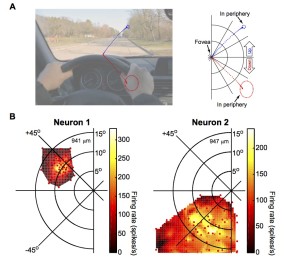Our lab has a new article published in Current Biology.

Our study describes new findings about functional organization in the superior colliculus (SC), which is a brain structure that is critical for exploration of the visual world with eye and body orienting movements. We were motivated by the possibility of ecological constraints on SC function and organization. Specifically, relative to where we are currently looking (i.e. with our fovea), peripheral objects in the upper retinotopic visual field may be farther than peripheral objects in the lower visual field. For example, when driving, an object on a tree-top is in the upper visual field, and it is farther than an object on your hands (which are in the lower visual field). Thus, upper visual field objects would project smaller retinal image features, by virtue of the objects’ distance from the eyes. If so, it might help for some behaviors to have higher spatial resolution and neural sensitivity for upper visual field locations. This is what we found in our study. Receptive fields of upper visual field representations in the SC are smaller than for lower visual field representations, affording higher resolution. Other physiological response properties were also different between upper and lower visual fields. We find these results to be very intriguing because they may provide a neural basis for why we can make upper visual field saccades with faster reaction times and better landing accuracy than lower visual field saccades.
